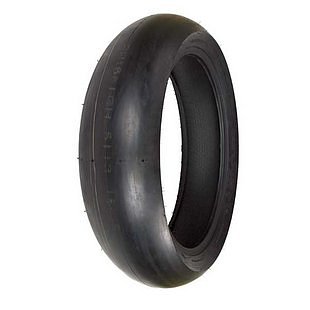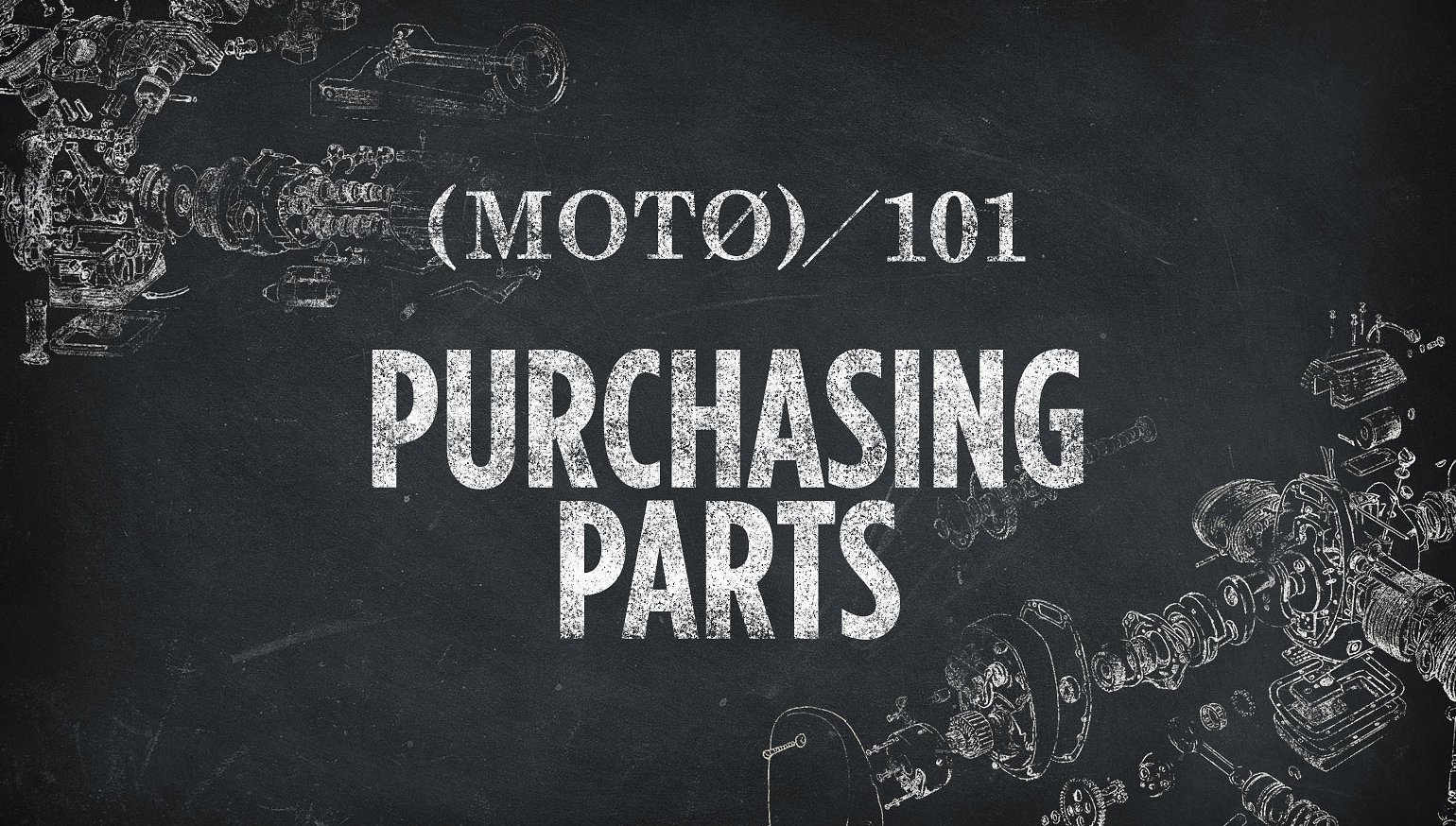As one of the resident parts junkies for the Big Orange Machine, I buy alllllmost as many parts as I sell.
I have learned hard lessons about motorcycle parts. Aftermarket and OEM parts alike range in price and quality. Sometimes, items that should “bolt right up” need more tweaking and finessing than if I just built something from scratch. Other times, making some non-standard pile of pieces jive goes so easily it seems like kismet.
I am often asked questions about how things can be made to work together. I do my best to explain that sometimes the answer involves fabrication, which is usually greeted with a frown. I often steal Merch Specialist Mike C.’s phrase: “Custom bike problems, custom bike solutions!”
In the spirit of making the parts ordering process less painful, I present some general thoughts I have developed on mo'cycle parts over the years.
Some parts are replacements, some are upgrades
Some parts are intended to fulfill a factory function, like an exhaust gasket. These look and act generally like the OEM parts they are intended to replace, so it’s fair to expect them to behave like OEM parts. However, especially in the motorcycle aftermarket, a large portion of the available parts are intended to change the performance characteristics of your bike.

Before you order a part, determine whether you want the same performance as the part you are removing, or if you want to change it.
Work smart, not hard
Our Catalog Specialists spend untold hours verifying, studying, and even fitting parts in an effort to get maximum information to our customers about installation, fit, and purpose for a huge variety of parts. There's a little "fitment notes" tab that often has some real nuggets of knowledge that can help an installer. Our Geeks can help you with some of the more technical products if you're uncertain if those notes pertain to you.
Strike while the iron is hot
Aftermarket parts are generally unavailable for a brand new model. The manufacturers have to obtain the bike, tool up, and then start cranking out parts. After a bike is a year to a few years old, usually the amount of parts for that bike is at its zenith. Unless the bike remains unchanged for a long time (Kawi KE100s, Harley Shovels, Honda Gold Wings), parts availability through either OEMs or aftermarket manufacturers dwindles as stock gets sold down. If you don’t believe me, compare the amount of exact-fit aftermarket parts that we sell for something like a 2015 Harley Ultra (1,170 on the day this article was authored) as opposed to a 2001 Suzuki TL1000 (40). Other items come into play here, too. The number of bikes produced is no small consideration when the aftermarket is gearing up to make parts. If you've never seen a first-year Aprilia Futura in person (I haven't!), our meager offering of nine direct fit-parts kind of makes sense.
Universal parts come in two flavors
Universal is a term that gets applied often. I find it has two meanings, though. There are some parts that are described as “universal” that fit damn near everything. A throttle boss is a good example. If you have a motorcycle, odds are excellent this throttle boss will install correctly in about a minute and a half.

Fitment is a tricky game
Sometimes, I order parts that “don’t fit” and game the system. Mazda oil filters fit the old Triumph 865 Modern Classic motor handily. Similarly, Toyota oil filters spin right on to Big Twin Harley Evolution and Twin Cam engines. They work great for the Evo, but they’ll starve a TC for oil and smoke an engine. As you can see, trying to outsmart the people who do this for a living can either pay off or backfire. Do any of you remember when I was trying to mate up old and new Harley primary pieces to fix up that 1993 Softtail I picked up to flip? I had to do a little bit of finagling to get all that stuff to work together. To present a third scenario, sometimes fitments won’t include models or years that a manufacturer suspects will fit, but haven’t been confirmed. Monkey with your bike at your own risk.
Returns aren’t always possible
I picked up a set of exhaust pipes not too long ago for a Shovel. The flanges were welded on crooked. I suspected I could modify the stub pipe to work in spite of the crooked flange. (They were already chromed, so I didn’t want to cut it off and re-weld it.) Turns out I was wrong. I cut up a set of pipes that was made incorrectly, and that was on me. I knew full well what I was doing, and I did it anyway. A good rule of thumb is that if you’re going to mount, modify, or even unpackage a part such that it cannot be resold, a retailer probably is not going to accept it for a return.

Some aftermarket parts don’t work with others
Because of the wide variety of aftermarket parts that exist, it’s nearly impossible to test Replacement Part A with all of the myriads of combinations of parts a rider may elect to install. Parts manufacturers usually design their parts for use with OEM machines. Let me give you concrete examples: An aftermarket high-mount exhaust on a sportbike is generally incompatible with aftermarket saddlebags, but it will work fine on the bike as delivered from the manufacturer.
Another good real-life example we see is in the ADV world. Often, a rider interested in protecting his bike will find there is a fitment conflict between skid plates and crash bars. Our very own Buzzsaw experienced this on his 2010 Triumph Tiger 1050. He found that Givi crash bars were a no-go with an SW-Motech skid plate. He’s in a bit of a pickle because he likes the design of each of those parts, but he feels that the items that “jive” together aren’t constructed the way he’d like. Food for thought, eh?
Some aftermarket parts only work with other aftermarket parts
There are lots of items that require separate purchases to work. (Remember “batteries sold separately” when you were a kid? Same deal!) A good example of this is a Harley four-speed mainshaft bearing support. This is used to help support the mainshaft when running an open primary belt drive. Guess what, though? Harley never sent a bike out in that configuration. If you want to run that bearing support, you need to junk your inner primary, which pretty much locks you into an un-oiled open chain or, more commonly, a belt. And if you have mid-controls on your bike, guess what? You're going to need to re-work those totally. Sometimes improvement projects can feel like they are spiraling out of control if other modifications weren't anticipated. (Ask me how a taillight installation turned into an engine swap. I'm kidding. Mostly.)

You probably own electrical stuff, even if you don't want it
If you bought an electronic or electrical item and had a change of heart, you're up a creek. Generally, you can't return these parts for several reasons. There’s not a real easy way to test items like this if they get returned. Additionally, poor mechanics will sometimes use good parts to see if a problem disappears, rather than accurately diagnosing the root of the symptom. Sucks, don’t it? Custom bike problems, custom bike solutions. Think long and hard before you embark upon electrical adventures if you're not a crack 'lectrical mechanic.
I wrote this article for two reasons. The first is that I’ve been on your side of the parts counter. I know how frustrating it can be as a customer who didn’t receive a vital piece of information, usually made worse by someone who doesn’t really care about my issue. The second reason is a bit more sublime. Consider this an open invitation to contact us if you’re ever unsure about fitment. Call up a Geek, drop them an email, leave us a comment on a product video, or ping me right here on Disqus. Even if we don’t sell the part you’re interested in, we can help you determine if your bike setup and wrenching abilities are a good fit for a given product.
Well, that’s the end of the article. I suppose we must… part.
I’ll show myself out.















